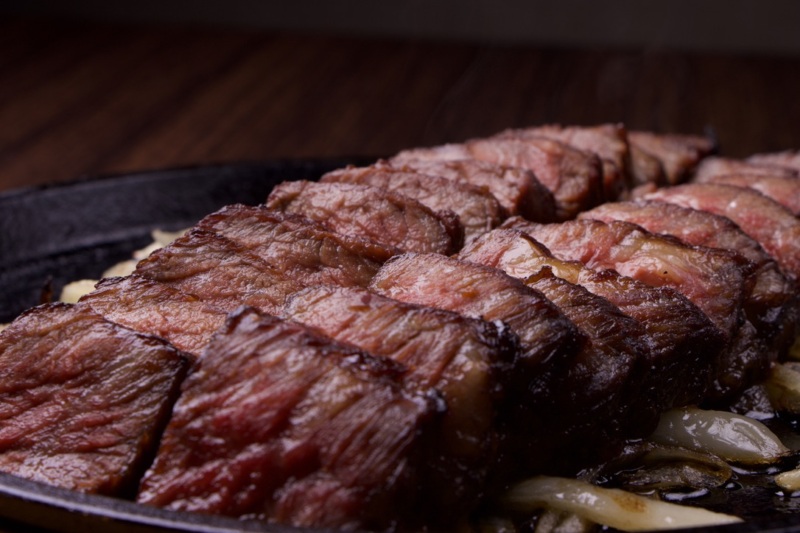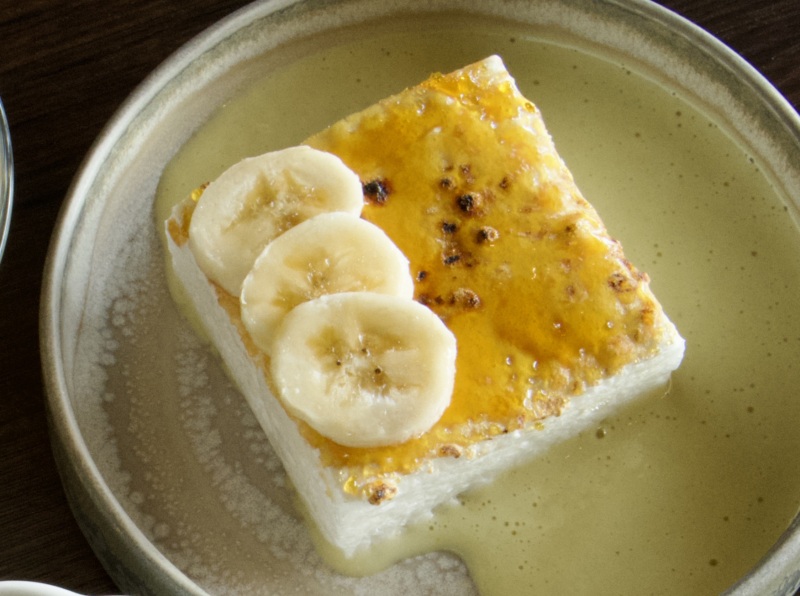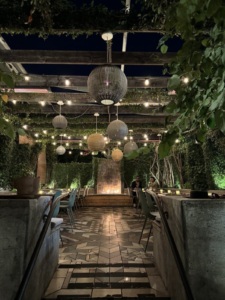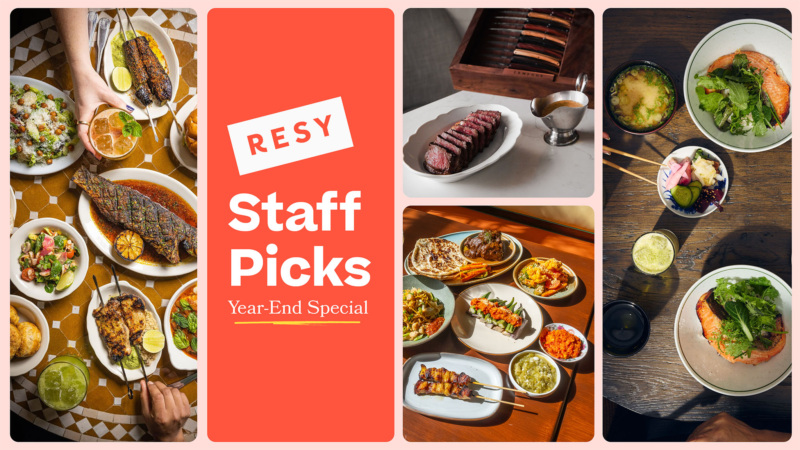
Five Dishes That Illustrate Danbi’s Unique Twist on Korean Cuisine
This summer, Danbi — the 80-seat a la carte dining room inside Koreatown’s bustling Chapman Plaza — was formally recognized by the Michelin guide. It was a huge victory for the space which reopened barely four months earlier, in the space formerly occupied by Tokki.
“Tokki was our first restaurant, and it held a very, very special place in our hearts, along with many in the community,” said Patrick Liu, a partner with Long Hospitality, which owns and operates Danbi. “Since our amazing culinary team had done such a fantastic job with our food program at [sister restaurant] Liu’s Cafe, it was only natural to think about how we could take another look at Tokki.”
They soon realized that starting with a clean slate was a better path forward than trying to squeeze Tokki’s Korean-fusion concept into a new box. Executive chef Lareine Ko and pastry chef Isabell Manibusan dove into research mode.
“It was a huge challenge,” recalls Ko. “It was basically trying to understand the flavors of Korean cuisine.” Before joining the Long Hospitality team, Ko, who is Taiwanese and began her cooking career in Taiwan, was a private omakase chef. “I was more comfortable with the ingredients at Liu’s Cafe than I was here. But I did a lot of research, and of course, I had input from all of the owners about what’s traditional in Korea.”
The goal for the new restaurant was to make it personal and idiosyncratic, as much as it is traditional. “They wanted us to push boundaries,” Manibusan adds. “They encouraged us to use things that we’ve experienced on the menu.”
What emerged was Danbi, which ditched the Korean-fusion concept for a Korean-specific one. “We chose this menu based on Koreatown favorites,” says Manibusan. “Koreatown is huge, and there’s so many restaurants, many of them specializing in just one thing. We want to be somewhere where you can get a lot of really good versions of many things.” Here, the chefs tell us more about how they created traditional Korean dishes shaped by their own personal experiences.


1. Scallop Pancake
“A traditional Korean seafood pancake is with shrimp, squid, and Chinese chives, and more,” says Ko. “I tried all of those seafood ingredients, but it just didn’t really hit.” Not only was the flavor off, but Ko was also envisioning a certain texture for the dish. “I’m Taiwanese, so I was thinking of a scallion pancake—nice and crispy on the outside, and soft and moist on the inside,” she says. Nailing that texture with seafood was challenging.
Ko tried a host of ingredients before landing on baby scallops, which “don’t overcook easily,” she says. “And then I was trying to get the perfect amount of crispiness. Not every Korean seafood pancake has that crunch.” Ko attempted to flip the pancake in the pan, but the scallops flew off. The solution: “Fry it.” The base is pan-fried for extra crunch, then when the scallops are placed on top, Ko deep-fries the whole thing. The result is a crispy pancake with juicy, tender scallops on top—that stick to the pancake, to boot.


2. Uni Bibimbap
“I think I made 10 variations of this or more in R&D,” Ko says. “I was so sick of uni by the end of it. I think I still have a little bit of PTSD.”
The result of all her trials and tribulations is an incredibly layered bowl of sweet and umami flavors, starting, naturally, with the rice. “We wanted rice that had the right amount of umami and earthiness to pair well with the toppings, and it was very hard to find,” Ko says. She tried sushi rice, but it didn’t fit with Danbi’s Korean palate. The winner was ultimately shiitake rice cooked with dashi, soy sauce, and mirin for a hint of sweetness. It’s topped with Korean seaweed, pickled daikons, and a shoyu-cured egg yolk
When it came time for the seafood, “we tried everything that you possibly can imagine, and then we came up with uni and Japanese amaebi sweet shrimp,” Ko says. “The richness and the umami from the rice pairs well with the sweet shrimp, and the egg yolk makes it nice and creamy,” she adds. The crunch from the daikon brings the whole dish together.


3. Zabuton
For Danbi’s main beef dish, Ko incorporated Japanese cooking techniques from her past life as a private omakase chef. “Some people with more experience dining out might know zabuton,” Ko says of the cut, which comes from the chuck, near the shoulder. At Danbi, “it’s marinated like a normal galbi (beef short rib), but we use Wagyu and finish it off over a binchotan charcoal grill.” The beef is dressed in a sweet soy sauce glaze, and served on a skillet with pickled garlic and Korean peppers. Both the glaze and the grilling are elements Ko learned while studying under a yakitori master: “They’re just little things I brought into Danbi and tried to work into Korean cuisine,” she says.


4. Banana Milk Cloud
“The Banana Milk Cloud is based on my childhood connection with Korea,” Manibusan says. “Because I was raised in Miami, there weren’t a lot of Asians, and I would only visit my family in Korea occasionally.” On those trips, she loved a special only-in-Korea treat: banana milk. “I could never find it in Miami,” she says.
That core memory informs Manibusan’s dessert, which combines banana milk with the classic French île flottante, or “floating island,” which involves a meringue floating peacefully in a pool of crème anglaise. “Ours is called Banana Milk Cloud because I feel like meringue is super light, airy, and ephemeral, like a cloud,” says Manibusan. The meringue here is topped with bruleed caramel powder and sliced bananas, set atop a banana milk anglaise.


5. Mont Halla
“There is no [exclusively] Korean dessert,” explains Manibusan. “If you go to a very traditional restaurant in Korea, what they have created is their interpretation of a European dessert.” So much like the Banana Cloud Milk, the Mont Halla is also based on a traditional French recipe: the mont blanc, named for the highest mountain in the Alps. (Mount Hallasan is the highest mountain in Korea.)
The main flavor in Manibusan’s version is Korean rice cake, which she chose specifically because “they’re very different from any other rice cakes in any other Asian country, mostly because of their savory quality.” She knew she’d be using a pavlova base, and wondered how to add a rice cake-like chewiness inside. The answer? A brown rice pudding spooned inside of the pavlova. “You have the rice element—the rice flavor, but also a chewiness that you’re not really expecting. There’s a crisp shell with a gooey, marshmallowy inside,” she says.
From there, Manibusan coats the pavlova with a toasted soybean powder, and, where a traditional mont blanc is topped with a pureed chestnut, she uses mung bean and mugwort. “Korean rice cakes use kabocha, pea flowers, or mugwort, which imparts a flavor,” explains Manibusan. “If you’ve seen a very deep green rice cake, it’s from mugwort.” Together, the dish “makes a cute little green mountain,” she says, with textures galore.
Oren Peleg is a screenwriter and journalist based in Los Angeles. His work appears in Vanity Fair, Architectural Digest, The Hollywood Reporter, Eater, and more. Subscribe to his newsletter here. And you can follow him here. While you’re at it, follow Resy, too.
Discover More

Stephen Satterfield's Corner Table



















